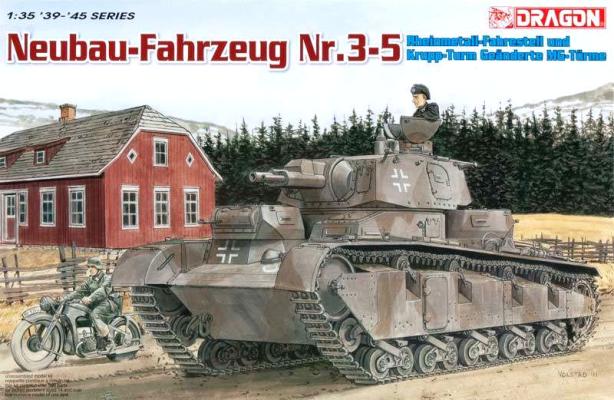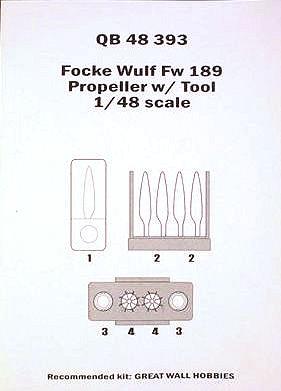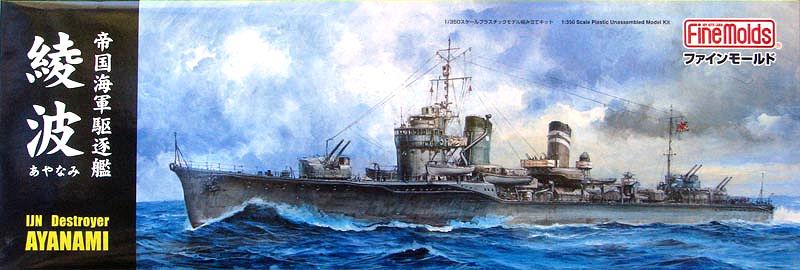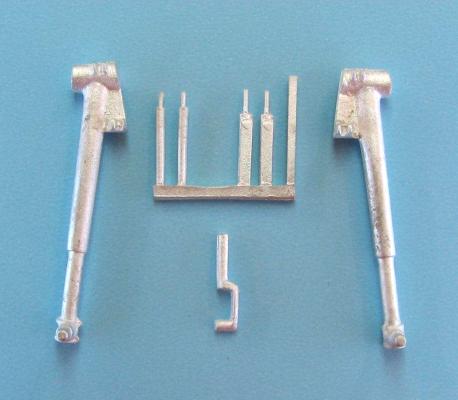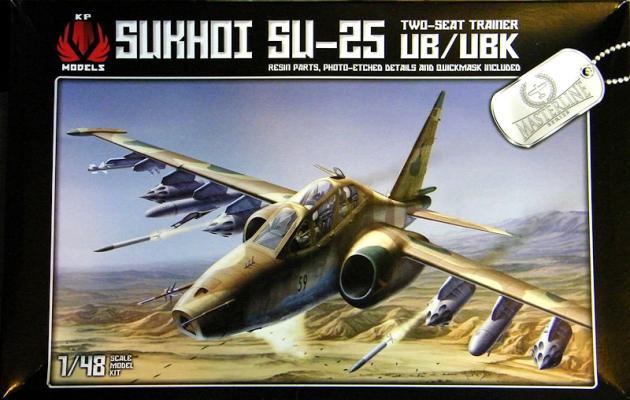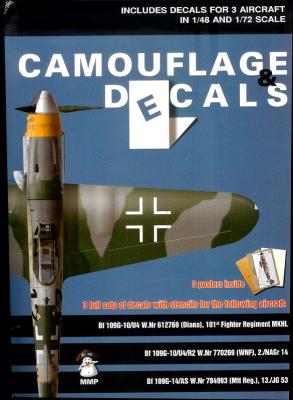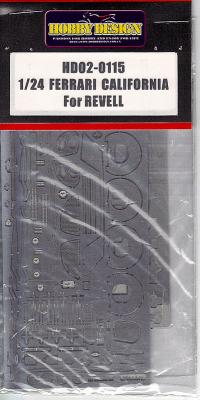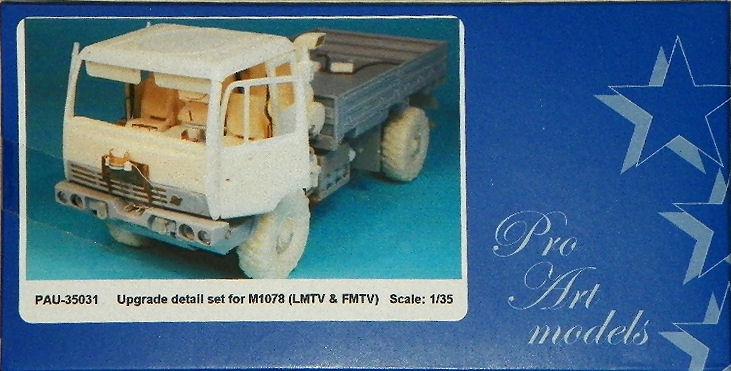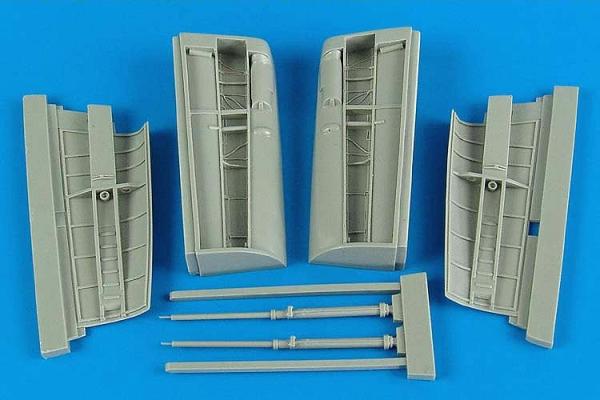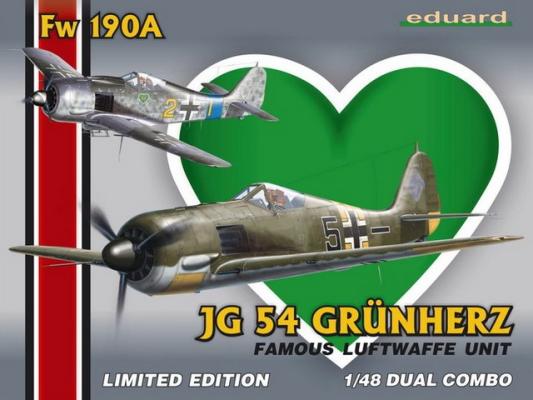The kit consists of over 400 parts on 15 sprues (7 containing individual track links), 1 upper hull, 1 small photo-etched fret, and 1 sprue of clear parts. The instructions are the exploded view type, with part numbers and sprue letters called out, consisting of 15 assembly steps on a single, multi-fold sheet. Painting details are shown throughout.
What's New
The Parts:
Quickboost is releasing products similar to this item for an ever-widening range of aircraft, and each of these products that I’ve seen lives up to the high standards of quality for which Quickboost is known. Included in this offering are four individual prop blades, two prop hubs into which the blades are fitted, and two spinners. Of course, also included is the “tool”, which is a solid block of resin with a specially designed layout that holds the prop blades and hubs in correct alignment for assembly.
Assembly:
Assembly is straightforward and can be accomplished after painting. That makes life easier for the builder. One simply places a “hub” in the receiving bay within the “tool”, places a prop on the “tool”, and glues it into the hub. No fuss, no muss, and perfect alignment every time!
Conclusion:
The Ship
When the Japanese destroyers of the Fubuki class first appeared in 1928, they took the rest of the world’s sea powers completely by surprise, and their combination of large size, high speed and heavy firepower set the standard for other navies to follow for the next decade. Commissioned in 1930, HIJMS Ayanami was the lead ship of an improved Fubuki “Special Type” with its main armament of six 5” guns capable of 75º of elevation, in theory making her the first warship in the world with main guns capable of taking on surface vessels and aircraft. However, her fire control was inadequate to the anti-aircraft task, and these weapons were never effective in that role.
Well, it’s November and Ross McMillan and his elves appear to be busy as ever with six new SAC releases. These range in scale from 1/72nd through 1/32nd and, as always, are welcome additions to his ever-growing list of metal replacement gear. This month’s releases are as follows:
- #32057 – Dewoitine D.520 Landing Gear – replacement for 1/32 Azur - $ 14.95
- #48152 – Mirage 2000 Landing Gear – replacement for 1/48 Heller, Eduard - $ 16.95
- #48153 – Yak-38 Landing Gear – replacement for 1/48 Hobby Boss - $ 16.95
- #48154 – P-61 Black Widow Landing Gear – replacement for 1/48 Great Wall - $ 16.95
- #38155 – FW 190 Landing Gear – replacement for all 1/48 Hasegawa - $ 16.95
- #72038 – Ju-52 Landing Gear – replacement for 1/72 Italeri - $ 12.95
Most highly recommended.
Make sure to visit their website to see these and a list of other gear available at quality Hobby Suppliers, or you can order direct.
In the latter half of the 1970’s the Sukhoi Design Bureau rolled out the Su-25, NATO codenamed “Frogfoot”, to the Soviet Air Force to fill a requirement for a dedicated close air support aircraft. Similar in role to the US Air Force’s A-10 Warthog, the Su-25 was designed to carry large air-to-ground payloads and internal cannon to defeat a wide variety of ground threats, including armor and personnel, and to have extended on-station time in the combat area to provide maximum support to its ground forces. About a decade after the Su-25’s introduction, Sukhoi began delivery of two-seat trainer variant prototypes and production units. Designated “UB” and “UBK,” these variants offered the capability to provide direct skill assessment of flight cadets and training and operational effectiveness reviews of active combat pilots.
This is the 2nd “book” in this series. It has an ISBN number (978-83-61421-54-2), but it really is not a book. What you get is a shrink-wrapped folder (made out of glossy, stiff stock) that contains a large set of decals and 4 separate sheets approximately 8 ¼” x 11 3/4” in size (which I understand is “A4” size in Europe). Each of these sheets has glossy, high-quality printing on both sides and is of nice, thick stock.
The first sheet shows all stencil markings on a set of generic Bf109G-10 line drawings (stencils are shown in their respective colors, where appropriate). The verso of this sheet has the requisite “book” publishing information, as well as RLM color chips (printed, not painted chips) with matching FS numbers. Also on this side are 9 line drawings of Bf109 rudder variants.
What’s in the Bag?
Hobby Design is a Chinese manufacturer with an extensive line of resin and metal photo-etch, window masks, and other up detailing add-ons for cars and motorcycles.
This review centers around Hobby Design’s set of PE parts for Revell’s Ferrari California. Included on the two seperately packaged and Mylar protected frets are detail parts for the engine bay, interior, and the car body itself. Some of the more intricate pieces include a 4-piece grill insert that replaces the as-molded center section of the grill. Only the outside portion of the Revell grill is used. Other exterior pieces, of course, include various Ferrari logos and scripts as well as the rear exhaust escutchions. Of note are the 3-piece windshield wiper arms and blade assemblies included in this set.
Pro Art Models released this upgrade set after the arrival of the Trumpeter LMTV (01004). With the kit’s overall sparseness in the cabin area, this is just the ticket. The box art shows the tires also but these are not included in the kit. You will need Pro Art’s 35030 (5 wheels) or 35037 (7 wheels).
This set contains approximately 67 cream-colored resin parts, 50 PE parts, and a three page instruction manual. The resin is beautifully cast and bubble-free. The photo-etched parts have nice pre-grooved parts and feels quite strong, not like some of the PE I have used recently.
Aires continues releasing excellent resin sets for the series of 1/32nd Revell Tornadoes. The latest set is replacement wells and speed brakes and includes the actuating pistons. Molding is first rate with no flash or air bubbles.
To install the parts, cut out the kit bays and smooth the openings. Install the parts from the inside and add the speed brakes. Detail on the parts is excellent and is somewhat better than the kit. The speed brake is deeper and finer than the kit’s. This set is an improvement but with a couple of caveats – obviously, if you are going to close the speed brakes, this set is not necessary. Second, the improvement in depth and detail is there but will set you back $27 ($24 from Great Models) and this is a decision for the modeler. It is a simple improvement.
Short History
In this kit, released also as a Limited Series edition, we are presented with the Focke-Wulf Fw-190A that flew combat with the well known fighter unit, JG 54 Grunherz. Jagdgeschwader 54 was formed through a very complicated process, but this only served to raise the level of significance of the unit later on. The foundation for the unit was laid in February, 1940, but its formation with three Gruppe (each with Stab and three Staffel, with each Gruppe fielding some forty aircraft) goes back to the summer of the same year. Its Kommodor (Geschwader Commanding Officer) from August 24th was Hannes Trautloft.

